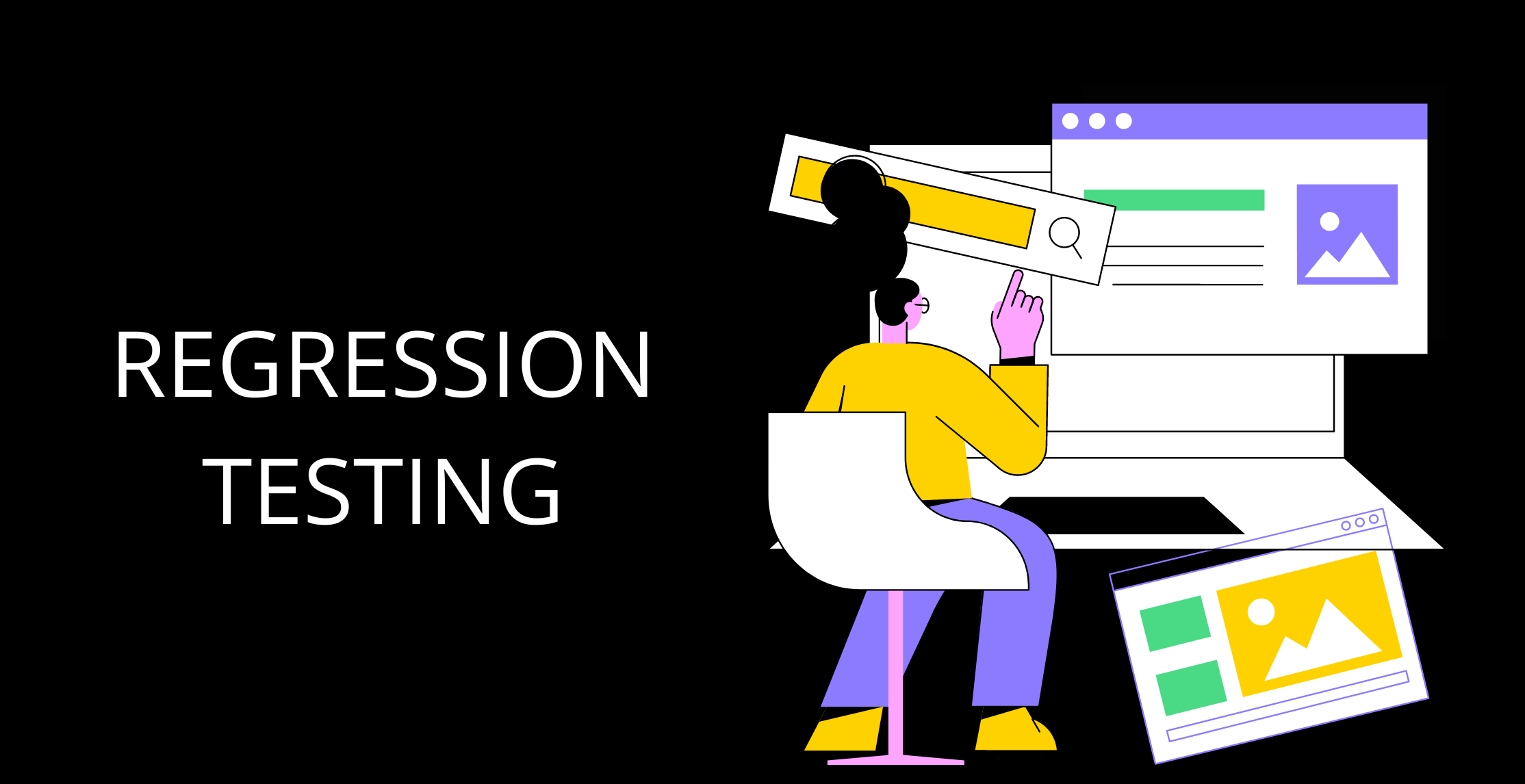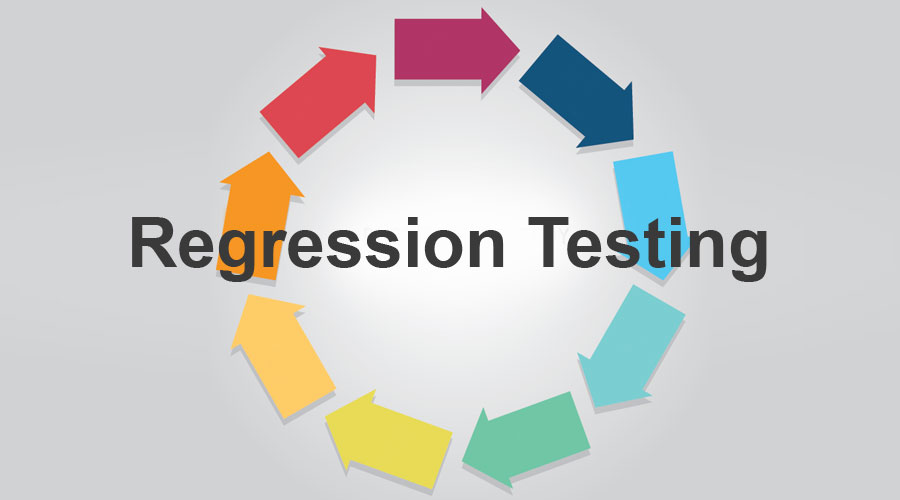 By: John Abhilash / May 28, 2024
By: John Abhilash / May 28, 2024
Safeguarding Stability: A Comprehensive Guide to Regression testing
In the ever-evolving world of software development, change is inevitable. New features are added, bugs are squashed, and code gets optimized. While these changes bring progress, they also introduce a potential risk: regressions. Regression testing emerges as a vital safeguard in this dynamic environment, ensuring that modifications don’t inadvertently introduce bugs into existing functionalities.
This comprehensive guide delves into the world of regression testing, empowering you to maintain the stability and quality of your software throughout the development lifecycle. We’ll explore:
What is regression testing?
Why is regression testing crucial?
Types of regression testing
When to perform regression testing
Effective regression testing strategies
Automation in regression testing
Benefits of implementing a robust regression testing process
By the end of this blog, you’ll be equipped to design and implement a regression testing strategy that safeguards your software from regressions and ensures a smooth development journey.

Regression testing, in essence, is the process of re-running existing test cases to verify that software functionality hasn’t regressed (deteriorated) after code changes are introduced. Imagine building a complex machine with many interconnected parts. After meticulously testing each individual part and ensuring it functions as intended, you wouldn’t simply assume everything still works flawlessly after assembling the entire machine. Regression testing is akin to thoroughly testing the entire assembled machine to guarantee all parts continue to work in harmony.
Here’s an analogy: Think of your favorite website. New features are constantly added, and bug fixes are implemented regularly. Regression testing ensures that these changes haven’t broken core functionalities like login, search, or online shopping.
Why is regression testing so crucial? Consider these compelling reasons:
Maintaining Quality: Regression testing acts as a quality gate, preventing regressions from slipping through the cracks and into production releases. This safeguards the user experience and minimizes the risk of encountering unforeseen issues later.
Early Bug Detection: By identifying regressions early in the development cycle, regression testing allows for prompt bug fixes, saving time and resources compared to fixing bugs discovered later in production.
Confidence in New Features: Regression testing fosters confidence in new features by ensuring they don’t negatively impact existing functionalities. This empowers developers to innovate and experiment without fear of breaking existing code.
Reduced Development Costs: The proactive approach to quality assurance fostered by regression testing helps prevent costly bug fixes in production environments. Early detection and remediation minimize the time and resources spent on fixing regressions.
Improved User Experience: Regression testing ensures a smooth and bug-free user experience by preventing regressions from impacting core functionalities. This translates into satisfied users and a positive brand reputation.
Regression testing encompasses a variety of techniques, each with its own strengths and applications:
Unit Testing: The most granular level of testing, focusing on the individual units of code (functions, modules) to ensure they function as intended after changes.
Integration Testing: Verifies that different modules or components work seamlessly together after code modifications.
Smoke Testing: A high-level, quick test suite designed to identify critical regressions after major code changes. It provides a basic sanity check before proceeding with further testing.
Regression Test Automation: Leverages automation tools to automate the execution of regression test cases, increasing efficiency and reducing manual effort.
API Testing: Focuses on the functionality, reliability, performance, and security of APIs (Application Programming Interfaces) after code changes.
The specific techniques chosen for regression testing will depend on the nature of the project, the scope of changes, and available resources.
Regression testing should be performed strategically throughout the development lifecycle:
After Code Changes: Whenever code modifications are introduced, regression testing is crucial to identify potential regressions before they reach production.
After Bug Fixes: Following bug fixes, regression testing ensures the fix itself hasn’t introduced unintended side effects or regressions in other areas of the code.
After New Feature Implementation: When new features are added, regression testing verifies that existing functionalities haven’t been compromised by the new code.
Before Major Releases: Prior to major software releases, comprehensive regression testing helps ensure overall stability and quality before users encounter the new version.
To maximize the effectiveness of your regression testing efforts, consider these strategies:
Prioritization: Focus on testing critical functionalities and areas of code most likely to be impacted by recent changes. This prioritization ensures efficient use of resources.
Test Case Selection: Develop a comprehensive yet optimized suite of test cases that effectively cover key functionalities and potential regression points. Balancing thoroughness with efficiency is key.
Test Data Management: Utilize a well-defined strategy for managing test data, ensuring its consistency and relevance throughout the regression testing process.
Version Control Integration: Integrate your regression testing efforts with your version control system to track changes, identify the source of regressions, and facilitate rollbacks if necessary.
Defect Tracking: Establish a clear and efficient process for logging and tracking identified regressions, ensuring timely resolution and communication with developers.
Automation plays a pivotal role in modern regression testing practices. Here’s why:
Increased Efficiency: Automation tools can execute large suites of regression tests significantly faster than manual testing, freeing up testers’ time for more strategic tasks.
Improved Accuracy: Automated tests are less prone to human error, leading to more consistent and reliable testing results.
Scalability: Automation empowers you to scale your regression testing efforts effortlessly as your codebase grows and complexity increases.
Repeatability: Automated tests can be easily repeated with each code change, ensuring consistent regression coverage throughout the development lifecycle.
While automation offers undeniable benefits, it’s crucial to remember that it doesn’t replace manual testing entirely. A combination of automated and manual testing strategies proves most effective.
Implementing a robust regression testing process offers a plethora of advantages:
Enhanced Software Quality: Regression testing safeguards the quality of your software by identifying and preventing regressions before they reach production.
Reduced Development Costs: Early detection and remediation of regressions minimizes the time and resources spent on fixing issues later in the development cycle.
Faster Time to Market: Efficient regression testing helps expedite the release process by ensuring a stable and bug-free software product.
Improved Team Collaboration: Regression testing fosters better communication and collaboration between developers and testers, leading to a more cohesive development process.
Increased Customer Satisfaction: By delivering high-quality software with minimal regressions, you ensure a positive user experience, leading to increased customer satisfaction and brand loyalty.
Now, let’s shift our focus to Guardian, a cutting-edge application security solution designed to fortify businesses against evolving threats. Guardian seamlessly integrates into DevOps pipelines, providing real-time vulnerability detection and resolution guidance powered by AI. With features like shift-left security, fast-tracking VAPT, and integration with JIRA, Guardian empowers organizations to proactively protect their applications throughout the software development lifecycle.
Key Features of Guardian:
1.Shift Left Security : Early Vulnerability Detection
2.Fast Track your VAPT: Gain insights to your application security posture across various assessments (SCA, SAST, DAST, IAC)
3.Security Driven Development : Streamlined Vulnerability Assessment and Penetration Testing(VAPT)
4.Integration with JIRA: Provided a centralized hub for tracking ,prioritizing and managing security issues.
5.AI powered Remediations: Immediate Resolution Guidance
Guardian’s AI delivers immediate resolution guidance upon identifying vulnerabilities, accelerating the remediation process and fostering a culture of proactive security to enhance overall code quality.
In an era where cybersecurity is paramount, Guardian serves as an indispensable ally, safeguarding applications throughout their lifecycle and empowering businesses to navigate the digital landscape with confidence. Fill the form to book your DEMO!!
Check Out our Other Resources: CASB vs SASE / OpenTofu Vs Terraform

Leave a Comment